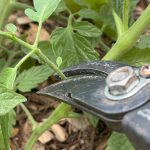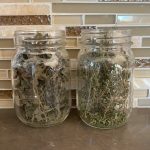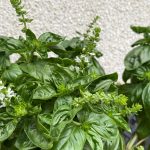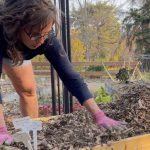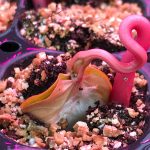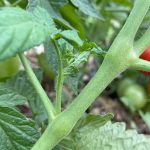If you’re looking for a delicious vegetable, garden grown cucumbers are hard to beat.
Growing cucumbers on the Canadian prairies can be a little tricky, so it’s important to ensure you take proper care of your cucumbers.
This water-filled gourd is cool and refreshing on a hot summer day or any other day, so follow my easy tips to grow the best cucumbers!
What’s the trick to growing fresh cucumbers in Alberta?
Well, read on and I’ll share where to grow cucumbers, when the best time is to plant cucumbers, and how to water & fertilize cucumbers to maximize their production.
The History of Cucumbers

Cucumbers are a member of the Cucurbitaceae family and they share family ties with watermelon, pumpkin, squash, and muskmelon.
Cucumbers are native to India and have been cultivated as a food for over 3000 years and they are spoken of in the Bible and in Greek and Roman literature.
Cucumbers migrated to Europe with the explorers of the 15th century and Christopher Columbus is given the credit for taking them to the New World of North America.
From there the breeding began to make this originally bitter fruit to a sweeter, more palatable table item.
Understanding the Cucumber
Are Cucumbers a Fruit or a Vegetable?

Whether cucumbers are a fruit or a vegetable is confusing to most of us, so here’s the scoop on cucumber classification:
Being a member of the gourd family, botanically, cucumbers are a fruit because they develop from a flower and seeds develop in the resulting fruit.
But why do we think cucumbers are vegetables?
I think the confusion comes from the fact that cucumbers aren’t sweet like most fruits such as berries or bananas, and because we tend to use them in more of a savoury sense such as cucumber sandwiches or Greek salad, we often think of cucumbers as a veggie.
What are the kinds of Cucumbers?
Cucumbers are divided into 2 basic categories: slicing or pickling cucumbers.
- Pickling cucumbers are small and up to about 10 cm (4″) in length and are used mostly for dill pickles. They are also eaten raw.
- Slicing cucumbers are longer, 15cm (6″) and longer. Slicing cucumbers are most often chopped, sliced, or cut in some way to be eaten raw, and used in most cooking. They are also pickled, like in sweeter bread & butter types.
The Best Place to Grow Cucumbers

Being that cucumbers are from tropical regions, cucumbers like to grow in very warm, even hot, conditions. For market gardeners, cucumbers are called ‘a tender crop’.
Most cucumber failures for the home gardener are due to the growing conditions being too cold.
Sudden, uneven temperatures or temperature swings can cause the fruit to taste bitter, or worst case, cause the plant to die.
Cucumbers not only have zero tolerance for frost whatsoever, but night time temperatures below 10 C will send them spiraling.
Don’t plant cucumbers outdoors unless the daytime temperatures are consistently 18 C (65 F) or above. Temperatures below this will not only halt their growth, but it will have a negative impact on their taste. Cucumber seed won’t even germinate below 10 C (50 F).
Grow cucumbers in a warm location with at least 6-8 hours of sunshine.
How to Start a Cucumber Seed

Start cucumber seeds indoors 3 weeks before you plan to transition them outdoors. The middle of June is usually a safe bet for planting outdoors and avoiding overnight frost in central Alberta, so seed them indoors by the middle of May.
If you plan to seed your cucumbers outdoors, don’t be in a rush and wait to seed them outdoors until the threat of frost has passed (usually around the middle of June) and the soil has warmed up – cucumber seeds won’t germinate in soil temperatures below 10 C.
If you are transplanting cucumber seedlings, wait until the middle of June and watch them for transplant shock. Transplant the young cucumbers when they have 1 or 2 true leaves. You may need to protect them from the sun for a few days as they adjust to their new environment.
Cucumber seeds grow best in pots where their roots will stay toasty warm. Maturing cucumber plants also grow well in large containers for the same reason.
Cucumbers don’t like to have their roots disturbed, so seeding them directly into the pot, or using a peat pot like a Jiffy 7, will protect the roots from transplant shock.
For growing out a cucumber plant in a container, pick a pot with a diameter of at least 30-45 cm (12-18″) across the top. The advantage to growing cucumbers in pots is that if the weather turns cold, you can move them indoors.
Cucumbers are great candidates for growing in the warmth of a greenhouse. If you have a small greenhouse, that is an ideal spot to grow them.
Related: Eight Tips for Transplanting Plants in Your Garden
How to Water Cucumbers
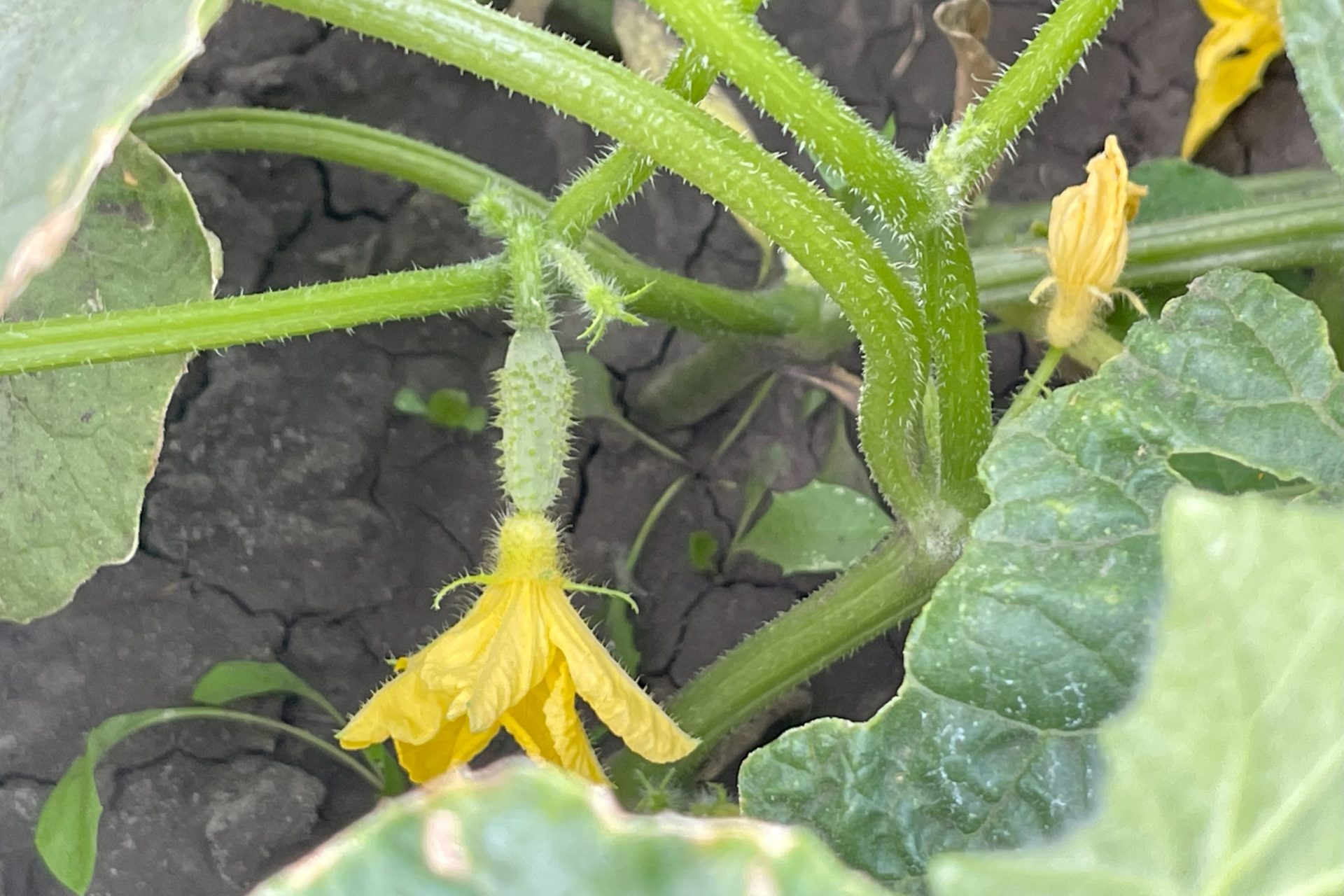
Cucumbers have very shallow root systems and this drives their unique watering needs, making them sensitive to drying out at any stage of growth and development.
Cucumbers grow best in consistent, evenly moist soil.
High quality soil rich in organic matter is the best choice for growing cucumbers because it both holds water and drains excess water well.
Cucumbers hate to have their roots sitting in soggy wet soil because it can lead to root rot and makes them susceptible to fungal infections. Cold temperatures compound this tendency.
One key to watering cucumbers optimally is to check the soil before watering. Insert the entire length of your index finger into the soil and if the the soil is dry at the tip or first knuckle, it’s time to water.
When cucumbers are at the early growth seedling stage and the flowering stage, their water requirements are low and the ability for their roots to take up water is limited, so monitor them for overwatering, not just underwatering.
Ensuring optimal water supply at the fruiting stage, where they have already flowered and are developing and growing the actual cucumber fruit, is very important.
Water cucumbers regularly to keep them evenly moist, but not wet. Not getting enough water will limit their growth and irregular or uneven watering can cause the fruit to taste bitter.
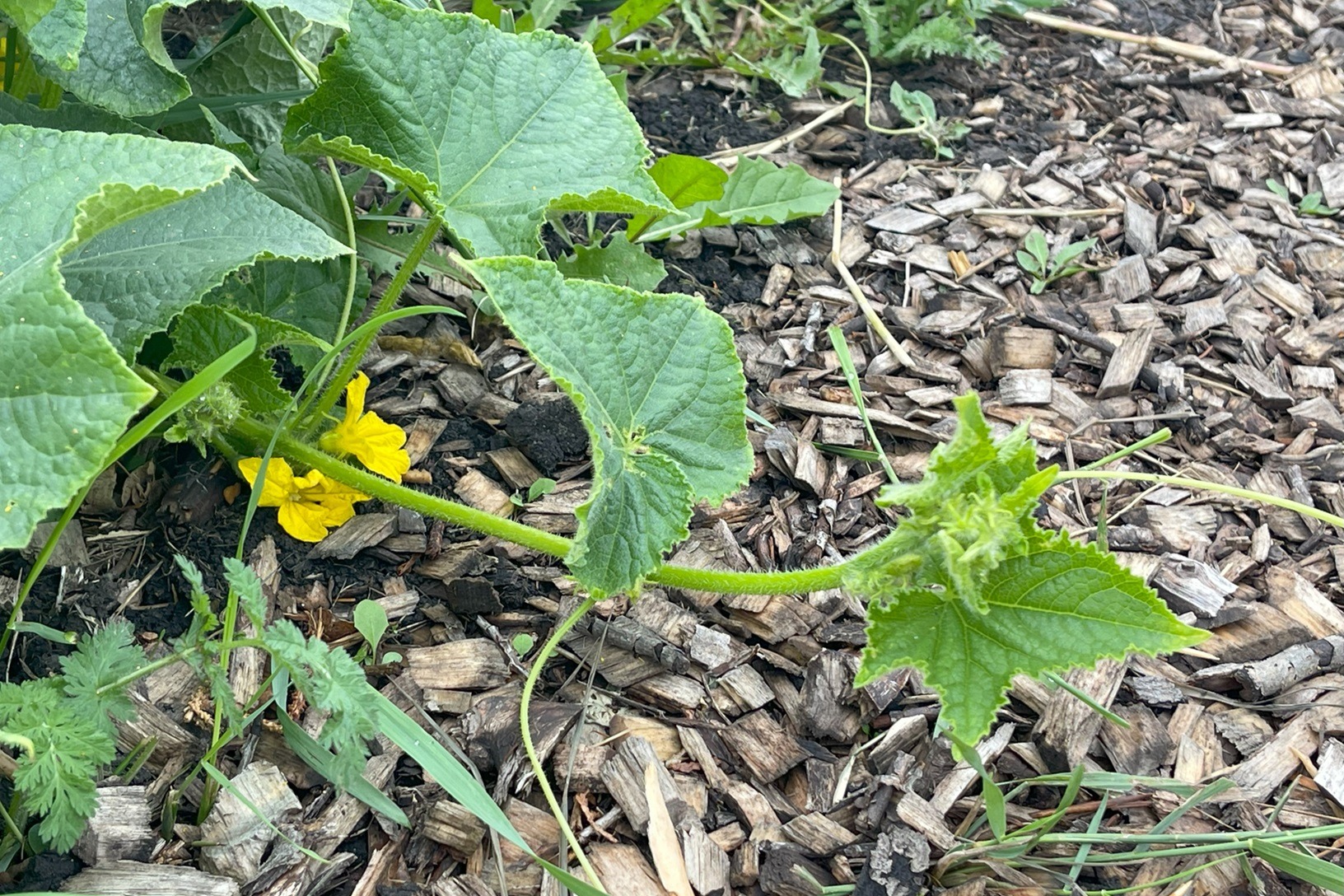
Mulch is a great friend to cucumbers. Mulch helps to retain soil moisture, keeps weed growth down, levels out soil temperatures, keeps the exterior of the cucumber fruit dry as it grows, and prevents the fruit from rotting which can happen as it sits on bare soil.
Add a 7 cm (3″) layer of mulch on the top of the soil either in a pot or in the ground extended out around the base of the cucumber plant about 30 cm (12″) but not touching the stem to keep the stem from rotting.
Any organic mulch that is a mix of chopped leaves, stems, and bark, will work well as a mulch. My favourite is a mixed bark mulch.
Related: What is Mulch? Making Garden Magic with Mulch
What is the Best Fertilizer for Cucumbers?

Cucumbers are heavy feeders and have high nutrient needs.
A balanced fertilizer like 20-20-20 or 10-10-10 will meet its needs. If you would prefer an organic fertilizer, look for Nitrogen (N) – Phosphorous (P) – Potassium (K) sequences that are fairly even, like a 5-7-6 or combination similar to this.
Fertilize cucumbers regularly every 2 weeks.
Related: How to Understand Fertilizer Labels, What is the Best Way to Fertilize Plants?
Trellising Cucumbers
Cucumber vines can easily grow to 2.5 m (8 feet) or longer and they grow well up trellises if garden space is limited.
Support cucumbers on trellises or tomato cages by gently winding them up and around the support.
I like to attach stems to trellises near leaf nodes with Velcro tape to prevent the stems from folding over or kinking. Give a little space between the vine and the trellis for the vine to expand as it grows.
Do Try Growing Cucumbers!
Cucumbers are refreshing and revitalizing on a hot summer day, and cucumber plants love hot summer days.
They are definitely worth the effort of growing in your own warm, sunny garden space because there’s nothing like a fresh juicy cucumber right off the vine!
More to Explore
- The Vegetable Planting Chart
- The Companion Planting Chart
- Transplanting Vegetable Seedlings
- How to Grow the Best Tomatoes in Alberta
- 3 Strategies to Deal with Tomato Blossom End Rot
- How to Prune Tomato Plants in August
- The Complete Guide to Growing Great Strawberries in Alberta and on the Prairies
- 4+ Ways to Grow Great Fresh Herbs in Alberta
- How to Freeze or Dehydrate Herbs
- 11+ Practical Tips to Start Plants from Seed
© Sharon Wallish Murphy, Gardening with Sharon











